I hope you all had a great weekend and are ready for the week ahead. I know I am 🙂 I would like to continue on with our “Curing the Garden Blahs” series and focus on one of my favorite aspects…..color.
It doesn’t take a rocket scientist to know that just by adding some color to our wardrobe, our food, our homes, etc. we can look better, enjoy our food more and create an atmosphere in our homes. Well, adding color in the garden creates much more interest and increases the beauty and curb appeal of your garden as well.
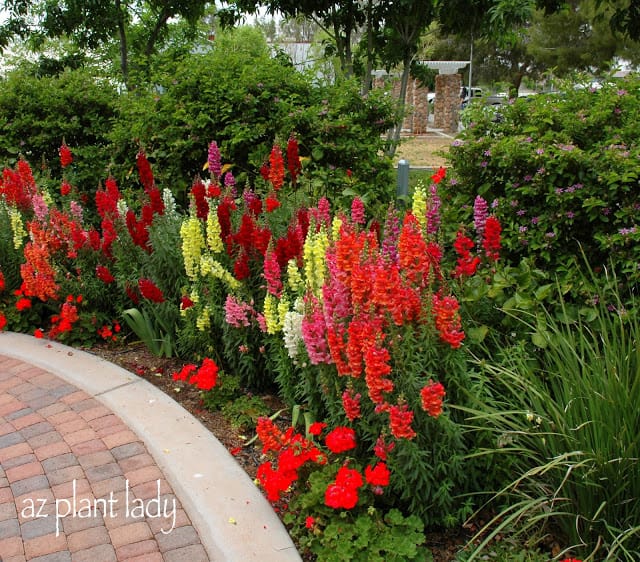
As we get started, I would like you first to become acquainted with our friend, the color wheel…..

Color is an integral part of landscape design. Now, I am not going to go into a lot of detail or complexity, but will keep this fairly simple.
Most of us know what we like or don’t like in regards to color. We each have a favorite color and some of us may have a color that we dislike. What is even more interesting is that if you have a color that you dislike in your house or in your wardrobe, you may love it in your garden. **For me, that color is orange….I don’t care for it in my house or in my wardrobe, but I do love it in my garden. I wonder why I like it in some places and not in others?
There are two main color groups for the garden. The first group consists of warm colors which are the reds, oranges and yellows. When used in the landscape, they grab your attention right away and excite you. The tend to make a large area look smaller and more intimate. If you want to create a focal point, then plants with warm colors are what you would want to use. For those of you who live in cooler climates, using warm colors in the garden can ‘visually’ warm you up 🙂
The blossoms below are a perfect example of warm colors….
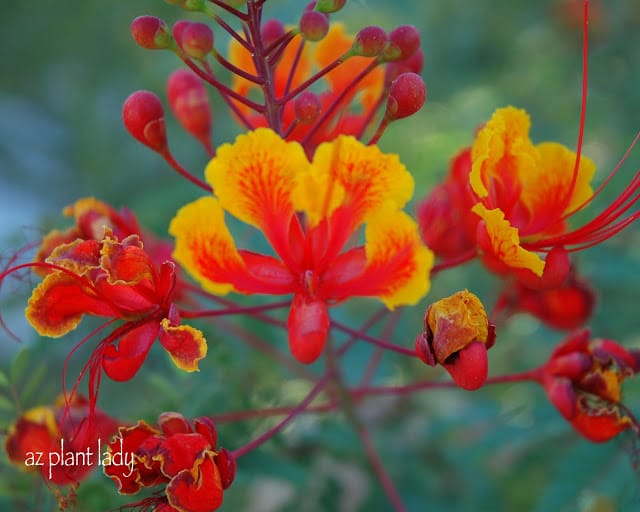
Red Bird-of-Paradise (Caesalpinia pulcherrima)

Yellow Bells (Tecoma stans stans)
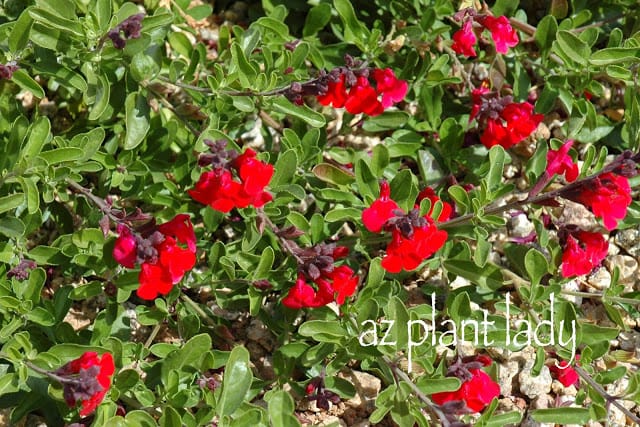
Red Autumn Sage (Salvia greggii)
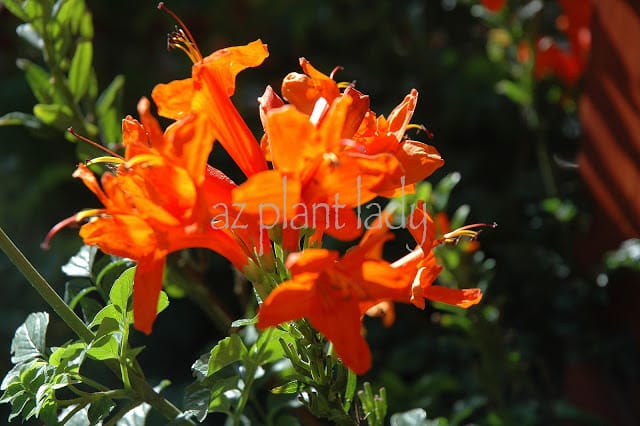
Cape Honeysuckle (Tecomaria capensis)
Our next group consists of cool colors such as pinks, purples and blues. These colors tend to make you feel relaxed and can make a garden appear larger. Cool colored plants would be the ideal choice for a quiet spot in the garden. If you live in a hot climate, you may want to incorporate cool colors in your garden as a way to ‘visually’ cool off.
Here are some examples of plants with cool colors….
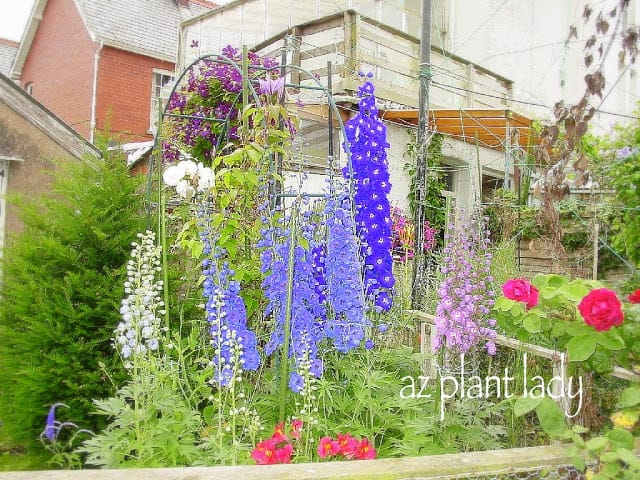
Delphiniums
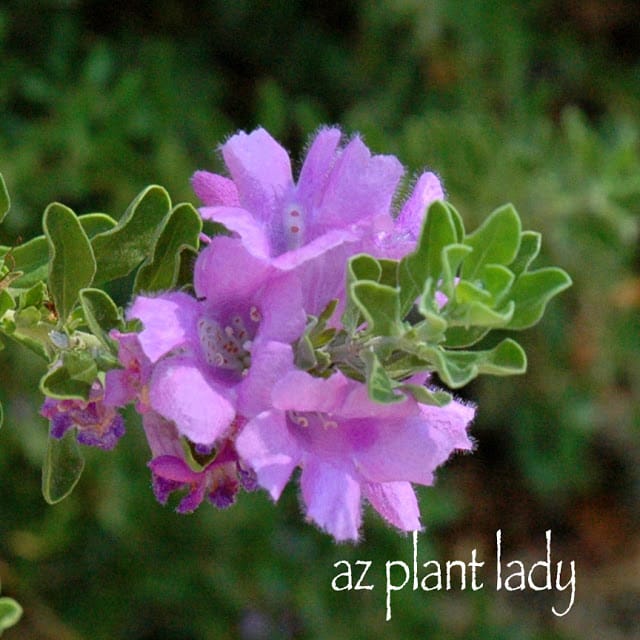
‘Rio Bravo’ Sage flower (Leucophyllum langmaniae ‘Rio Bravo’)
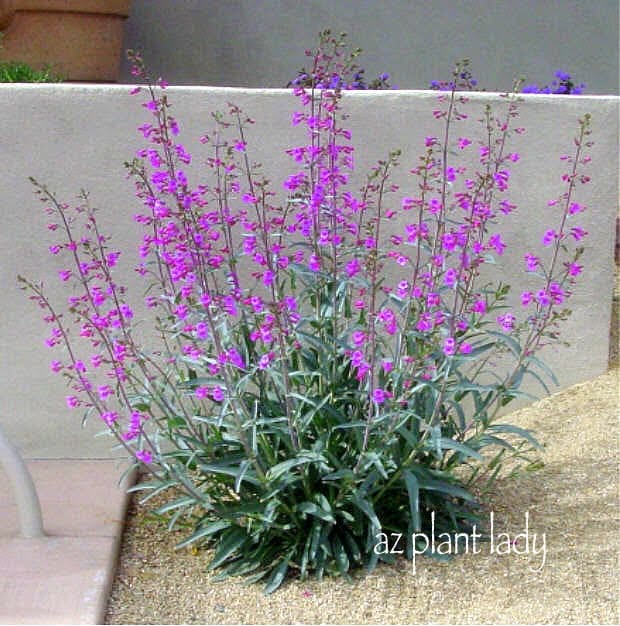
Parry’s Penstemon (Penstemon parryi)

This bouquet of Pink and White Globe Mallow (Sphaeralcea ambigua) flowers and Goodding’s Verbena are a perfect example of cool colors.
Now, how do you decide what colors look good together?
Well in general, warm colors look great together as do the cool colors. But you can also mix them up to create a contrast that really catches your attention. To do this, let’s go back to our color wheel….
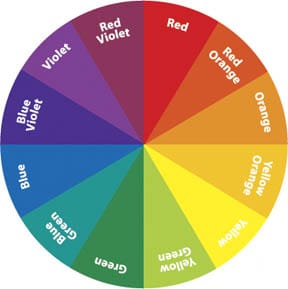
Now, think of the phrase “opposites attract”, because in this case it is true. Opposite the purples and blues you will find the yellows and oranges. When paired together, the contrast between the two colors immediately grabs your attention.
For example, picture Cape Honeysuckle shrubs with Purple Trailing Lantana growing in front of them…..
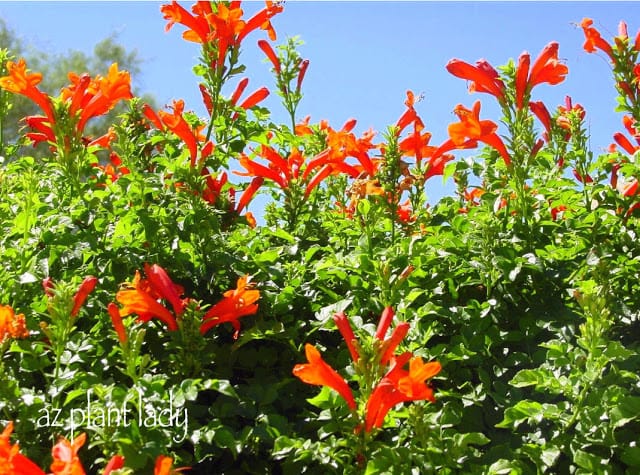
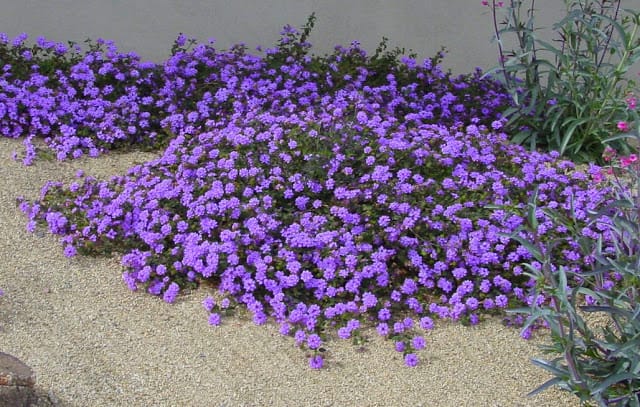
Here is another example….

The blossoms of Orange Jubilee (Tecoma x Orange Jubilee) and Green Cloud Sage (Leucophyllum frutescens ‘Green Cloud’) contrast very well.
Now I would like to share with you an excellent tip and it involves the color yellow. Now you may be thinking that yellow really does not do much for you and I would actually agree….it is not my favorite color. BUT, do not underestimate the power of yellow in the landscape. By just adding a few yellow flowering plants among your other colors, they will cause your other plants to look better. Really, it’s true. Yellow flowering plants contrast so well with other colors….I promise you they will make your garden look better.
For example, look at the container plantings below….
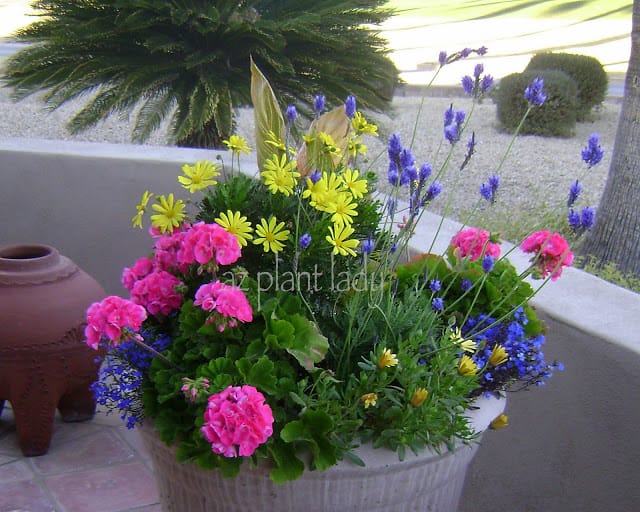
We have a collection of Lavender, Lobelia and Geraniums….all cool colors. But the addition of yellow daisies and gazania, all the colors really ‘pop’.
So now are you all ready to head to the nursery and mix your colors? Well, I have a word of caution first…..if you intend to plant two different plants together so that you can enjoy the way their colors look next to each other when they are in bloom…..make SURE that they bloom at the SAME time. You would be surprised at how many people make the mistake of purchasing plants, relying on the color picture of the plant tags thinking the colors would look great together….only to find later that one plant blooms in spring and the other in summer.
I do hope you are finding these posts on “Curing the Garden Blahs” helpful. Our next installment will cover how texture can create interest in the garden.
*****There is still time to enter my seed giveaway for Firecracker Penstemon seeds. Here is the link for those of you interested. You have until this Wednesday (September 29th).****








